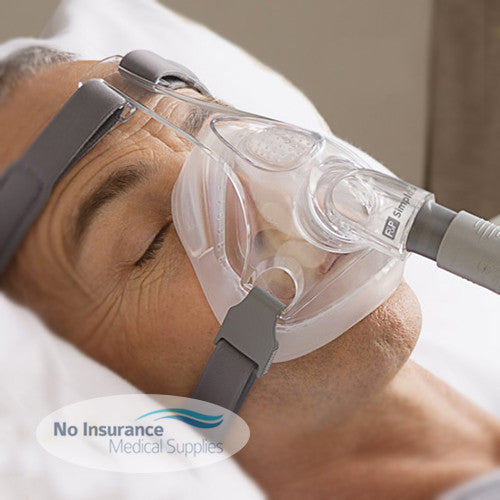Sleep apnea is a sleep disorder that causes a person to stop breathing during sleep. The lack of oxygen causes the body to essentially force the sleeper to wake up so that they can start breathing again.
While each “wakeup” incident can last just a few seconds (and the sleeper usually doesn’t remember waking up the next morning), people with severe sleep apnea can experience dozens of interruptions per hour.
These interruptions can greatly harm your sleep quality, causing you to feel poorly rested, even after a full night’s sleep. But how this happens can vary depending on whether you have obstructive sleep apnea or central sleep apnea. Here’s what you should know.
Obstructive Sleep Apnea
Obstructive sleep apnea is the most common type of sleep apnea, affecting between 10-30 percent of all adults in the United States. This type of sleep apnea occurs when the throat is blocked or constricted during sleep, usually because of the collapse of fatty tissue in the throat as the muscles in this area relax.
Obstructive sleep apnea is also commonly associated with snoring, which tends to occur as the airways become constricted.
There are several known risk factors for obstructive sleep apnea. For example, risk for this condition increases with age (with people in their 60s and 70s having the highest risk). Being overweight or obese has been linked to a greater risk for obstructive sleep apnea, as have physical features like a large tongue, shorter jaw, or wide neck. Certain hormone conditions and a family history of the disorder also increase risk.
Controllable risk factors include sleeping on your back, smoking, and the use of alcohol.
Central Sleep Apnea

Central sleep apnea occurs when there are disruptions between the brain and breathing muscles. This often results when the brain stem doesn’t recognize the body’s carbon dioxide levels. As a result, the appropriate signals from the brain aren’t sent to the breathing muscles, resulting in shallow breathing and temporary breathing interruptions. This condition is relatively uncommon, with less than one percent of adults experiencing central sleep apnea.
The exact causes behind central sleep apnea aren’t as well-defined as obstructive sleep apnea. However, the condition often appears to be linked to brain stem injuries, as well as medical conditions like stroke, heart failure, and kidney failure.
As with obstructive sleep apnea, men and people age 65 and older are at a higher risk for central sleep apnea. High-altitude sleeping and certain prescription medications can also increase the risk for this sleep disorder.
Identifying Sleep Apnea
While obstructive sleep apnea and central sleep apnea have very different causes, they share many of the same symptoms.
With both conditions, individuals will experience excess daytime sleepiness and fatigue, which can also contribute to difficulty concentrating, increased irritability, and restless sleep with nighttime awakenings and abnormal breathing patterns. Morning headaches are also common. Fatigue can be so severe that you fall asleep while driving or working.
People with obstructive sleep apnea may also experience dry mouth when they wake up. Loud snoring, interrupted by gasping or choking, is also common. People with central sleep apnea may also experience nighttime chest pains or shortness of breath.
Left unchecked, the lack of quality sleep caused by sleep apnea can also increase the risk for other serious medical conditions, such as hypertension and stroke.
If you suspect you may be suffering from sleep apnea, talk to your doctor. They will typically have you go through a health history and physical exam. Depending on your symptoms, they will refer you to a sleep study. A sleep study is an overnight stay at a sleep lab, where specialists track your breathing, body oxygen levels, sleep stages, and more to determine whether you have obstructive sleep apnea or central sleep apnea.
Treating Sleep Apnea

Regardless of whether you are diagnosed with obstructive or central sleep apnea, one of the most common (and effective) treatment solutions is the same: a PAP (positive airway pressure) machine. CPAP and BiPAP machines offer a continuous flow of pressurized air throughout the night via tubing and a face mask, helping to keep airways open and promote steady breathing.
CPAP machines provide one set level of air pressure throughout the night, while BiPAP machines provide different pressure levels during inhalation and exhalation. Your pressure setting is determined by a sleep specialist based on the severity of your sleep apnea.
While a CPAP machine doesn’t “cure” sleep apnea, it helps you mitigate breathing interruptions so you can sleep soundly through the night.
Depending on your condition, doctors might recommend other actions as well. For example, someone with obstructive sleep apnea could be advised to start exercising and taking steps to lose weight. They may also be advised to reduce alcohol consumption or avoid back sleeping. Someone with central sleep apnea may also need to get treatment for the underlying medical condition that is linked to their sleep interruptions.
Get Your CPAP Equipment From No Insurance Medical Supplies
Whether you are dealing with obstructive or central sleep apnea, there is no denying that getting the right CPAP equipment for your treatment can be expensive — especially if you don’t have health insurance. This is where No Insurance Medical Supplies comes in.
We offer a wide range of CPAP and BiPAP devices at discounted prices, helping you potentially save hundreds of dollars off of MSRP. With our best price guarantee, free shipping on most orders over $99, and available financing on orders of $500 and up, getting quality treatment for sleep apnea has never been more affordable.

